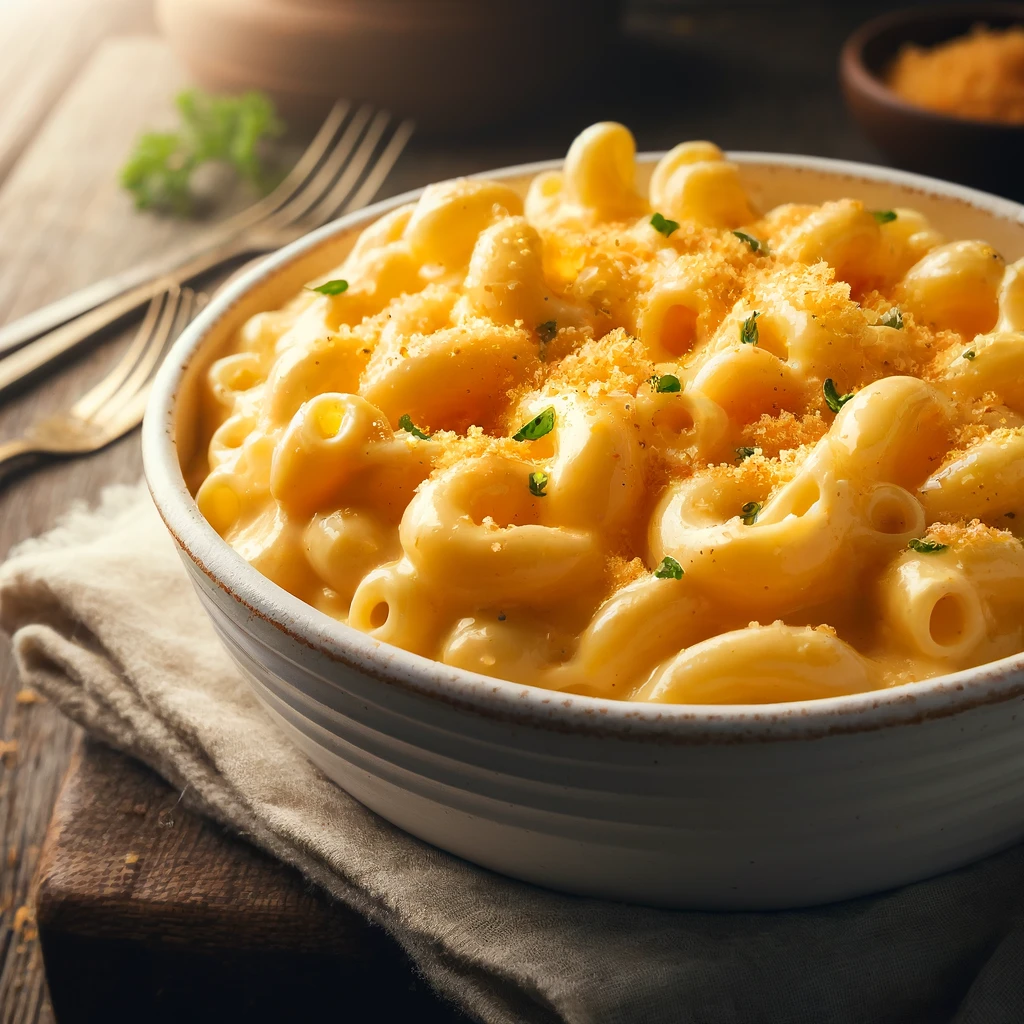Mac and cheese is one of those dishes that evokes nostalgia, warmth, and pure comfort. From its humble beginnings as a simple pasta dish to the gourmet variations available today, mac and cheese has cemented itself as a staple in households around the world. But what makes a mac and cheese truly creamy? How can you elevate this classic dish to a new level of indulgence while staying true to its roots? In this comprehensive guide, we’ll dive deep into the world of creamy mac and cheese, exploring its history, the science behind its creaminess, and variations that cater to every palate.
The Rich History of Mac and Cheese
Mac and cheese has a storied history that dates back centuries. While it’s most commonly associated with American cuisine, its origins can be traced back to Italy, where pasta and cheese were first combined. The earliest known recipe dates back to the 13th century, in an Italian cookbook called “Liber de Coquina.” This early version, known as “de lasanis,” featured sheets of pasta layered with grated cheese and spices.
Mac and cheese as we know it today began to take shape in England, where the dish was popularized in the 18th century. It was Thomas Jefferson who is credited with bringing the dish to America after encountering it during his travels in Europe. He was so taken by the dish that he imported pasta and a pasta machine to the United States, introducing mac and cheese to American palates.
The dish gained widespread popularity in the U.S. during the Great Depression, when Kraft Foods introduced its boxed version of mac and cheese in 1937. The convenience and affordability of the boxed mix made it an instant hit, and it has remained a beloved comfort food ever since.
The Science Behind Creaminess
To achieve the perfect creamy mac and cheese, it’s essential to understand the science behind its creaminess. The creaminess of the dish largely depends on the balance between the starch in the pasta and the fat in the cheese and other dairy products.
When pasta cooks, it releases starch, which thickens the sauce and helps it cling to the noodles. This is why many recipes recommend not rinsing the pasta after cooking; the residual starch contributes to the creaminess of the sauce.
Cheese, on the other hand, provides fat and flavor. The type of cheese you use is crucial—some cheeses melt better than others. For a smooth, creamy sauce, it’s best to use cheeses with high moisture content, such as cheddar, Gruyère, or fontina. These cheeses melt evenly and contribute to the luxurious texture of the dish.
Adding a béchamel sauce, made from butter, flour, and milk, also enhances creaminess. The flour thickens the sauce, while the fat from the butter and milk provides richness. Combining this sauce with melted cheese creates the velvety texture that defines a great mac and cheese.
Crafting the Perfect Creamy Mac and Cheese
Now that we’ve covered the basics, let’s explore how to create the perfect creamy mac and cheese. Here’s a step-by-step guide to making this classic dish:
Ingredients:
- 12 oz elbow macaroni or your favorite pasta shape
- 4 tbsp unsalted butter
- 4 tbsp all-purpose flour
- 3 cups whole milk
- 1 cup heavy cream
- 2 cups shredded sharp cheddar cheese
- 1 cup shredded Gruyère cheese
- Salt and pepper to taste
- Optional: 1 tsp Dijon mustard, 1/2 tsp smoked paprika
Instructions:
-
Cook the Pasta: Begin by cooking the pasta in a large pot of salted boiling water until al dente. Drain the pasta but do not rinse it—this helps retain the starch needed for a creamy sauce.
-
Make the Béchamel Sauce: In a large saucepan, melt the butter over medium heat. Once melted, whisk in the flour and cook for about 2 minutes, or until the mixture is lightly golden. This creates a roux, which will thicken the sauce.
-
Add the Dairy: Gradually whisk in the milk and cream, ensuring no lumps form. Continue to cook the mixture, whisking constantly, until it thickens and coats the back of a spoon.
-
Incorporate the Cheese: Reduce the heat to low and add the shredded cheddar and Gruyère, stirring until the cheeses are fully melted and the sauce is smooth. For added depth of flavor, stir in Dijon mustard and smoked paprika if desired.
-
Combine the Pasta and Sauce: Add the cooked pasta to the cheese sauce, stirring to ensure each piece is thoroughly coated. If the sauce seems too thick, you can add a splash of milk or cream to reach your desired consistency.
-
Season to Taste: Taste the mac and cheese and season with salt and pepper. Adjust the seasonings as needed.
-
Serve and Enjoy: For a classic presentation, serve the mac and cheese straight from the stovetop. If you prefer a baked version, transfer the mac and cheese to a baking dish, top with breadcrumbs, and bake at 350°F (175°C) for 20 minutes, or until the top is golden and bubbly.
Elevating Your Mac and Cheese
While the classic recipe is undeniably delicious, there are countless ways to elevate mac and cheese with additional ingredients and flavors. Here are some ideas to inspire your culinary creativity:
-
Truffle Mac and Cheese: For a touch of luxury, add a drizzle of truffle oil to the cheese sauce or stir in a small amount of truffle butter. Truffle’s earthy, aromatic flavor pairs beautifully with the richness of the cheese.
-
Lobster Mac and Cheese: Incorporate chunks of cooked lobster into the mac and cheese for a decadent seafood twist. The sweetness of the lobster complements the creamy cheese sauce, making this version perfect for special occasions.
-
Bacon Mac and Cheese: Add crispy bacon pieces to the dish for a smoky, savory addition. The saltiness of the bacon contrasts nicely with the richness of the cheese.
-
Vegetable Mac and Cheese: Boost the nutritional value by adding roasted vegetables like broccoli, cauliflower, or butternut squash. These vegetables add color, texture, and a subtle sweetness that enhances the dish.
-
Spicy Mac and Cheese: Kick up the heat by adding diced jalapeños, hot sauce, or a sprinkle of cayenne pepper. The spice adds a zesty contrast to the creamy sauce.
-
Gourmet Cheese Blend: Experiment with different cheese combinations to create unique flavor profiles. For example, try a blend of sharp cheddar, creamy brie, and nutty Parmesan for a rich, complex sauce.
The Perfect Pairings
Mac and cheese is a versatile dish that pairs well with a variety of sides and beverages. Here are some pairing ideas to round out your meal:
-
Green Salad: A simple green salad with a light vinaigrette cuts through the richness of the mac and cheese, providing a refreshing contrast.
-
Roasted Vegetables: Roasted Brussels sprouts, asparagus, or carrots add a healthy, flavorful side to balance the dish.
-
Crispy Chicken: Serve mac and cheese alongside crispy fried or oven-baked chicken for a comforting, Southern-inspired meal.
-
Sparkling Wine: The effervescence of sparkling wine, such as Champagne or Prosecco, complements the creamy texture of mac and cheese and cleanses the palate between bites.
-
Craft Beer: A hoppy IPA or a malty amber ale pairs well with the cheese’s richness, offering complementary flavors and a refreshing finish.
Conclusion
Creamy mac and cheese is more than just a dish—it’s a comforting embrace in culinary form. Whether you prefer it classic and simple or elevated with gourmet ingredients, there’s no denying the appeal of this timeless favorite. By understanding the science behind its creaminess and experimenting with different flavors and pairings, you can create a mac and cheese that is truly your own. So, next time you’re craving comfort, reach for your favorite pasta and cheese, and get ready to indulge in the ultimate creamy mac and cheese experience.






